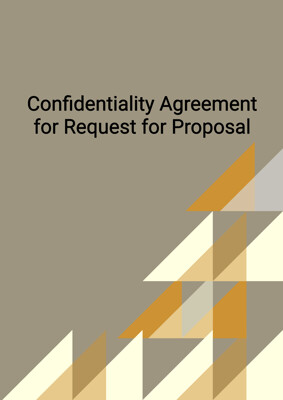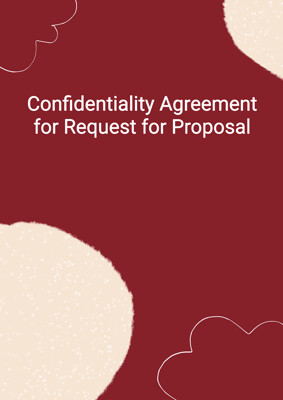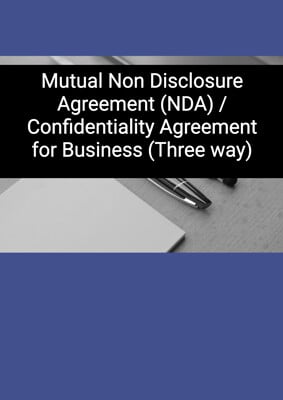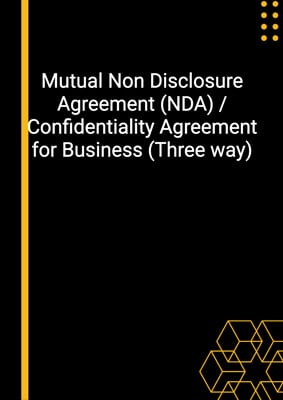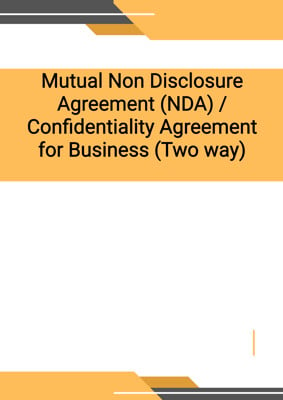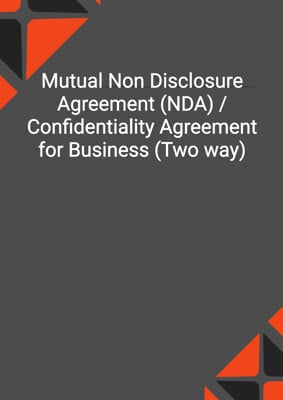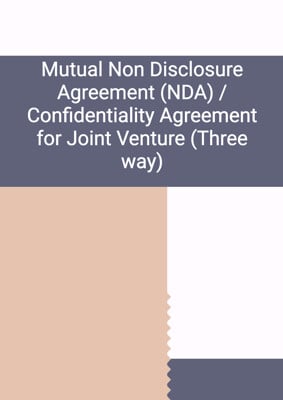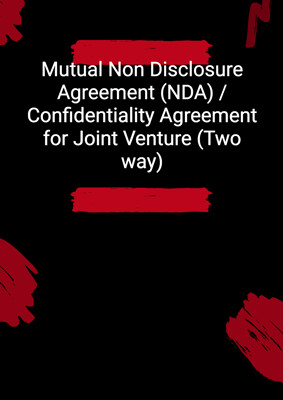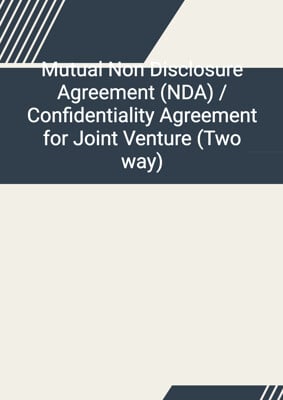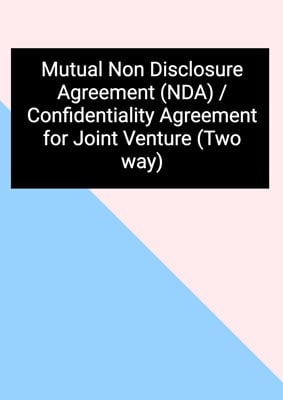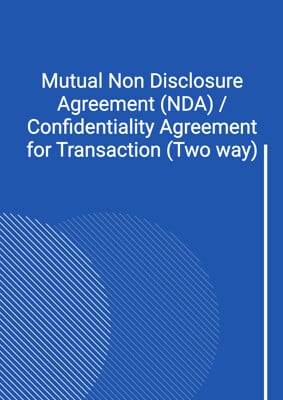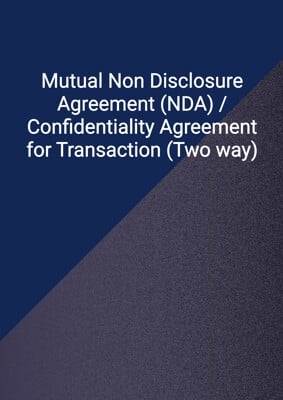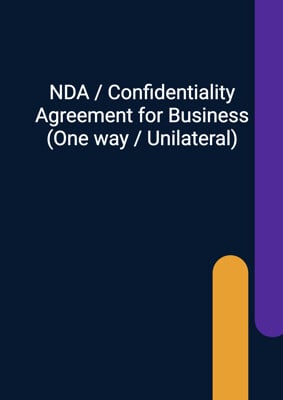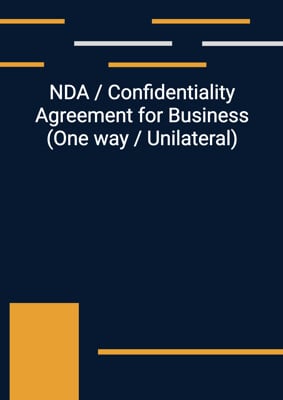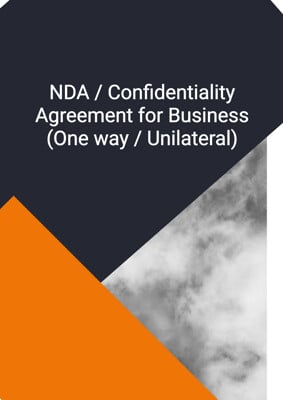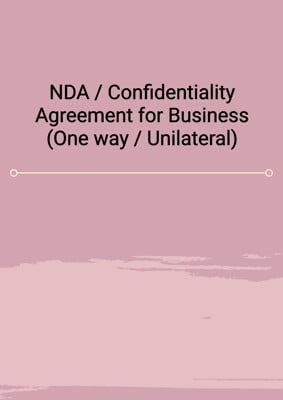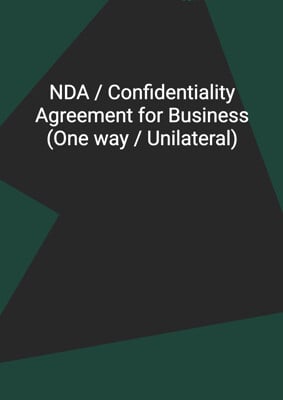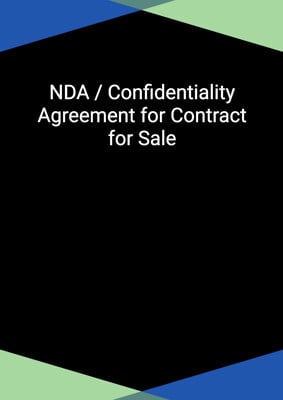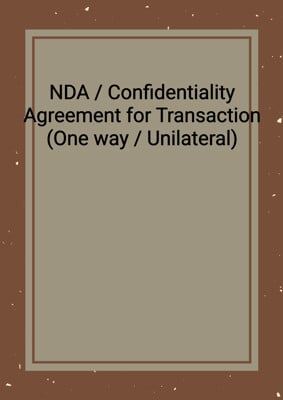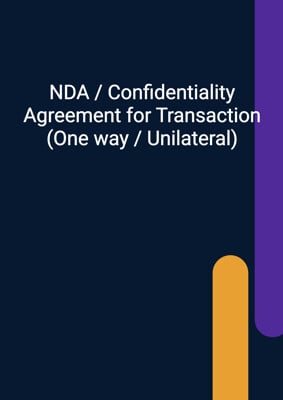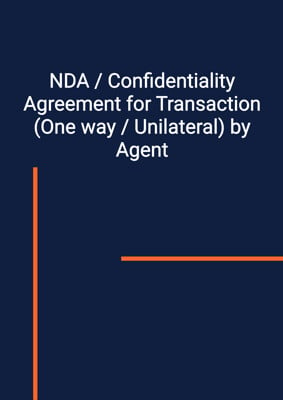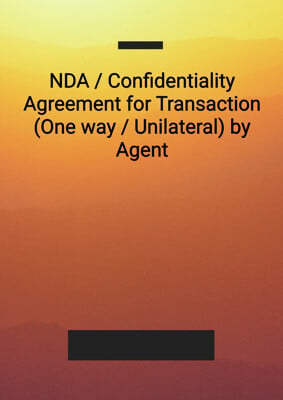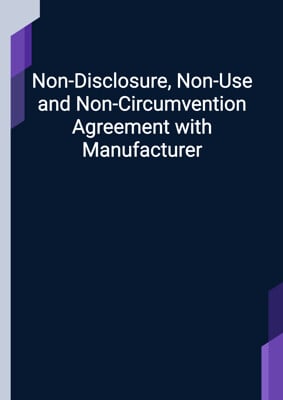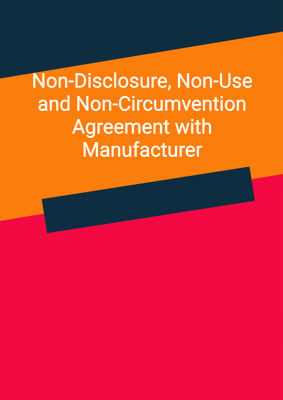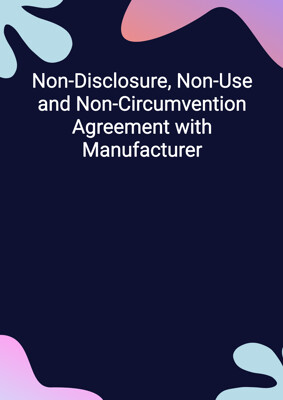How to Tailor the Document for Your Need?
01
Create Document
Fill in the details of the parties. You can click the "Fill with Member’s Information" button to complete it with information saved to your account.
02
Fill Information
Please fill in any additional information by following the step-by-step guide on the left hand side of the preview document and click the "Next" button.
03
Get Document
When you are done, click the "Get Document" button and you can download the document in Word or PDF format.
04
Review Document
Please get all parties to review the document carefully and make any final modifications to ensure that the details are correct before signing the document.
Document Preview
Document Description
The NDA / Confidentiality Agreement for Transaction (One way / Unilateral) is a legal document that establishes a confidential relationship between the discloser and the disclosee. The document is entered into by two parties, namely Party 1 (the discloser) and Party 2 (the disclosee). The purpose of the agreement is to protect the confidential information related to a transaction that the discloser is willing to share with the disclosee.
The document begins with an interpretation section, which defines key terms used throughout the agreement. These terms include 'connected persons', 'group', 'information', 'purpose', 'representatives', and 'writing'. The interpretation section ensures that both parties have a clear understanding of the terminology used in the agreement.
The obligations of confidentiality are outlined in Section 2 of the agreement. The disclosee undertakes to maintain the confidentiality of the information provided by the discloser and to use it exclusively for the purpose specified in the agreement. The disclosee is prohibited from copying, reproducing, or reducing the information to writing, except as necessary for the purpose. Additionally, the disclosee is not allowed to use, reproduce, transform, or store the information in an externally accessible computer or electronic information retrieval system.
Section 3 of the agreement covers confidentiality measures that the disclosee must take to maintain the confidentiality of the disclosed information. These measures include not disclosing the information to anyone other than approved representatives, keeping the information separate from other documents and records, applying appropriate security measures, keeping a written record of the information received, and ensuring that the information is stored securely.
The agreement also addresses exceptions to the confidentiality obligations in Section 4. The disclosee is not bound by the confidentiality obligations if it can prove that the information was lawfully available to the public, previously known to the disclosee, disclosed by a third party, or independently developed by the disclosee. If the disclosee is legally required to disclose the information, it must notify the discloser and provide details of the disclosure.
Section 5 of the agreement deals with the return of information. Upon request by the discloser, the disclosee must return or destroy all documents and materials containing the information. The disclosee remains bound by the confidentiality obligations even after the completion of the purpose or the return or destruction of the information.
The agreement includes disclaimers and warranties in Section 6. The discloser reserves all rights in its information and does not make any representation or warranty regarding the accuracy, reliability, or completeness of the information. The discloser and its connected persons are not liable for any use of the information by the disclosee, except in cases of fraudulent misrepresentation.
Confidentiality provisions regarding the existence and nature of the agreement are outlined in Section 7. Both parties agree to keep the agreement confidential, and any announcement or circular related to the agreement requires approval from both parties. The confidentiality obligations survive the completion of negotiations, regardless of whether the transaction is implemented.
The agreement provides remedies for breaches of the confidentiality obligations in Section 8. The discloser is entitled to remedies such as injunction, specific performance, and other equitable relief. No proof of special damages is necessary for the enforcement of the agreement.
Other provisions in the agreement include waiver (Section 9), assignment (Section 10), entire agreement (Section 11), no license (Section 12), governing law and jurisdiction (Section 13), notices and service (Section 14), and rights under contracts for third parties (Section 15).
In summary, the NDA / Confidentiality Agreement for Transaction (One way / Unilateral) is a comprehensive legal document that establishes a confidential relationship between the discloser and the disclosee. It outlines the obligations of confidentiality, confidentiality measures, exceptions to confidentiality, return of information, disclaimers and warranties, confidentiality provisions, remedies for breaches, and other important provisions.
How to use this document?
To use the NDA / Confidentiality Agreement for Transaction (One way / Unilateral), follow these steps:
1. Review the agreement: Familiarize yourself with the entire agreement to understand its purpose and the obligations of both parties.
2. Fill in the parties' information: Enter the names and principal places of business of Party 1 (the discloser) and Party 2 (the disclosee) in the agreement.
3. Understand the interpretation section: Pay attention to the definitions of key terms used in the agreement to ensure a clear understanding.
4. Obligations of confidentiality: Acknowledge and agree to the obligations of confidentiality outlined in Section 2. Understand that the disclosee must maintain the confidentiality of the information and use it exclusively for the specified purpose.
5. Confidentiality measures: Take the necessary steps to maintain the confidentiality of the disclosed information as outlined in Section 3. This includes limiting disclosure to approved representatives, keeping the information separate, applying appropriate security measures, and keeping a written record.
6. Exceptions to confidentiality: Be aware of the exceptions to the confidentiality obligations listed in Section 4. Understand that the disclosee is not bound by confidentiality if certain conditions are met.
7. Return of information: Comply with the requirements in Section 5 regarding the return or destruction of documents and materials containing the information upon request by the discloser.
8. Disclaimers and warranties: Understand the disclaimers and warranties provided in Section 6. Recognize that the discloser does not guarantee the accuracy, reliability, or completeness of the information.
9. Confidentiality provisions: Keep the existence and nature of the agreement confidential as outlined in Section 7. Seek approval from both parties for any announcement or circular related to the agreement.
10. Remedies for breaches: Understand the remedies available to the discloser in case of a breach of the confidentiality obligations as stated in Section 8. Recognize that the discloser may seek injunction, specific performance, or other equitable relief.
11. Other provisions: Familiarize yourself with the remaining provisions of the agreement, including waiver, assignment, entire agreement, no license, governing law and jurisdiction, notices and service, and rights under contracts for third parties.
Remember, this guidance is a summary and does not constitute legal advice. It is important to consult with a legal professional to ensure compliance with applicable laws and regulations.
Not the right document?
Don’t worry, we have thousands of documents for you to choose from:


